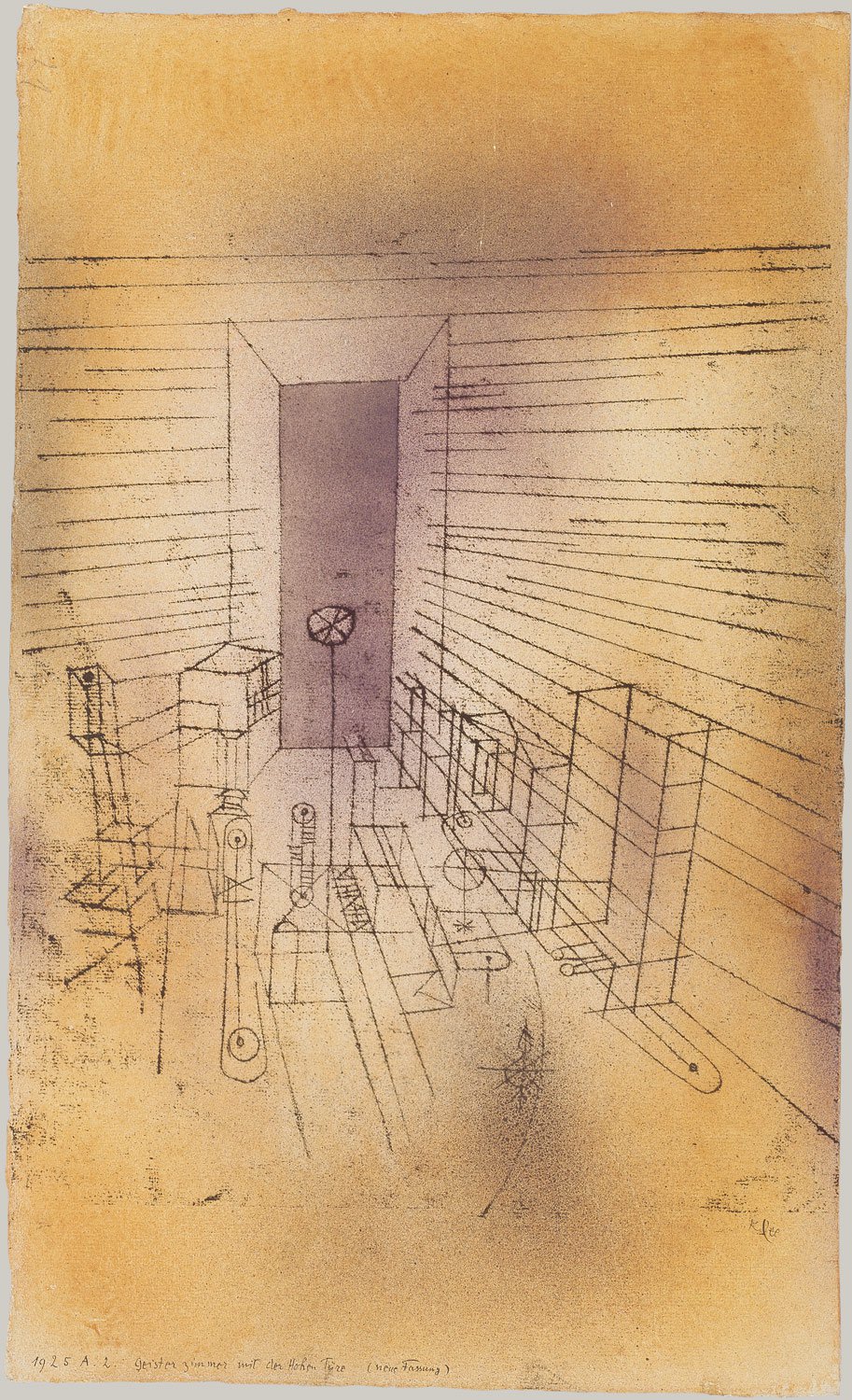Produced for K-12 educators, Teach This Poem features one poem a week from our online poetry collection, accompanied by interdisciplinary resources and activities designed to help teachers quickly and easily bring poetry into the classroom. The series is written by our Educator in Residence, Dr. Madeleine Fuchs Holzer, and is available for free via email.
Featured Poem
Ghost Chamber with the Tall Door (New Version)

Ghost Chamber with the Tall Door (New Version), Paul Klee (German, 1879–1940). Date: 1925. Medium: Sprayed and brushed watercolor, and transferred printing ink on paper. Dimensions: 24×16 5/8 inches. Credit: The Berggruen Klee Collection, 1987. www.metmuseum.org.
Classroom Activities
Whole Class Warm-Up:
- Ask your students to write down their associations with the words haunted and ghosts.
- Ask them to draw lines that look like the path a ghost might take through the air or to move their hands in that kind of path. What sounds do ghosts make? What words describe their lines, gestures, and sounds? Ask them to add these words to their list of associations.
- Call on a few students who want to share their lines by drawing them on the board or share their hand gestures by demonstrating them. Ask others to share their sounds. Ask the class what they see in the lines and gestures. What do they hear in the sounds? Write these descriptions on the board for all to see.
- Show your class Paul Klee’s painting. What do they notice about the lines, colors, and shapes? What do they think these represent? Ask them to provide evidence for their interpretations.
Small Group Activity:
- Ask each group to pick a facilitator, who will make sure each person in the group has a chance to contribute, and a reporter, who will take notes.
- Have the facilitator ask one person to read the poem aloud for the group, then a second person to read the poem aloud. The facilitator should then ask the following questions:
What do you think the poem is about?
What questions do you have about the poem?
What connections/associations does the poet make?
What connections/associations do you make to the poem?
What jumps out at you in the poem?
What do you see?
What do you hear? Are there rhymes? Are there repeating sounds? - The reporter should take notes on the group’s answers, check with the group to make sure her notes represent what was said, then report back to the whole class for discussion.
